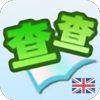data header造句
例句與造句
- These reserved words have two purposes; they are used both for Ancillary data headers.
- These reserved words have two purposes, for synchronization packets, and for ancillary data headers.
- Hence, in practice, the maximum data growth is 0 % ( plus the size of the data header, which is 16 bytes ).
- Commonly called'CKiSS', this is an extension to the binary data header record, and unlike other extensions makes no changes to the configuration file.
- The mechanism replaces GSM 7 bit default alphabet code table and / or extended table with a national table ( s ) according to special information elements in User Data Header.
- It's difficult to find data header in a sentence. 用data header造句挺難的
- This allows up to 155 characters, encoded in 136 octets ( 140 octets, minus the 4-octets of User Data Header required to indicate the use of a shift table and the language code ).
- With both " Locking " and " Single " shift tables, up to 150 characters are allowed, encoded in 132 octets ( 140 octets, minus two 4-octets User Data Headers ).
- Presence of User Data Header is indicated by the TP-UDHI ( Transfer Layer Protocol User Data Header Indicator ) bit-6th bit of the first octet of the GSM 03.40 or 3GPP 23.040 message.
- Presence of User Data Header is indicated by the TP-UDHI ( Transfer Layer Protocol User Data Header Indicator ) bit-6th bit of the first octet of the GSM 03.40 or 3GPP 23.040 message.
- Larger content ( concatenated SMS, multipart or segmented SMS, or " long SMS " ) can be sent using multiple messages, in which case each message will start with a User Data Header ( UDH ) containing segmentation information.
- When TP-UDHI is 1, the TP-UD starts with User Data Header ( UDH ); in this case the first octet of the TP-UD is User Data Header Length ( UDHL ) octet, containing the length of the UDH in octets without UDHL itself.
- When TP-UDHI is 1, the TP-UD starts with User Data Header ( UDH ); in this case the first octet of the TP-UD is User Data Header Length ( UDHL ) octet, containing the length of the UDH in octets without UDHL itself.
- The choice of table for a given message is selected in the User Data Header section of an SMS message and can be specified for the whole text ( a " Locking " shift table replacing standard GSM 7 bit default alphabet table ) or a single character ( " Single " shift table replacing the GSM 7 bit default alphabet extension table ) . " Locking " and " Single " shift tables together in the same message are possible, if both standard default alphabet table and default alphabet extension table are to be replaced.
- There is still no defined national language shift table for French, Greek, Russian, Bulgarian, Arabic, Hebrew and most Central European languages that need a better coverage than the default 7-bit standard character set and its default 7-bit extension character set : if ever any character is composed that cannot be represented in those default GSM 7-bit sets, the message will be automatically reencoded using UCS-2, with the effect of dividing by more than two the maximum length in characters of messages that can be sent at the price of a single SMS ( when a message is split in multiple parts, a few other octets are needed in the User Data Header to indicate the sequence number of each part ).
